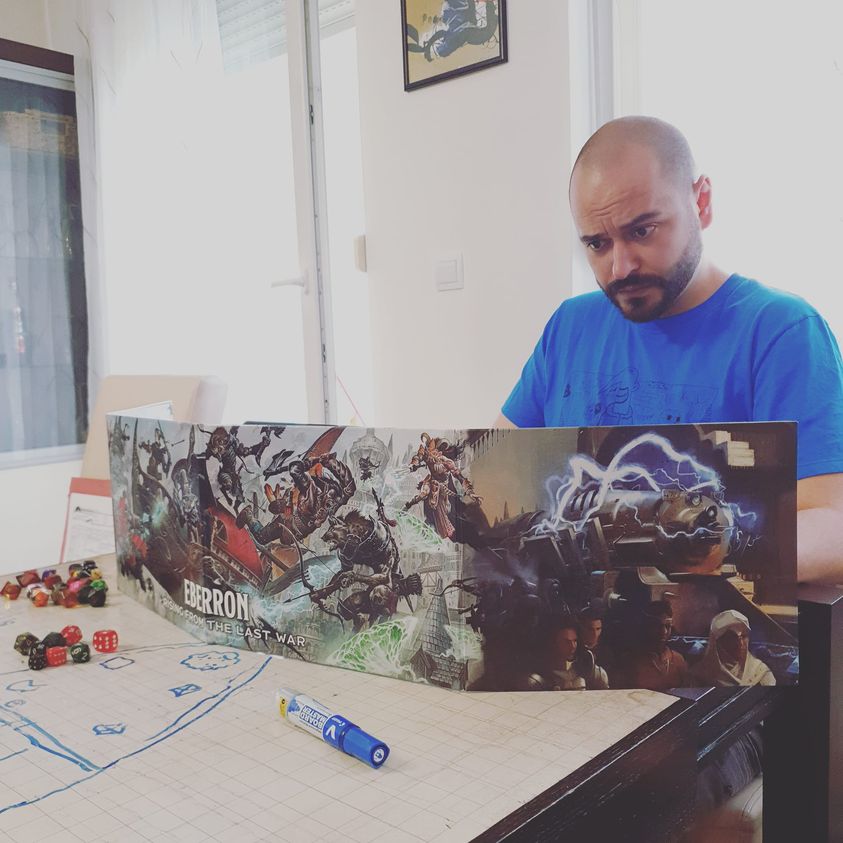Part II. Advancing the basics
Where last we left off in part one of the Dungeon master guides, we introduced the Dungeon master role, stressed the importance of starting small, discussed the process of leading a session, igniting the story, cooperating with the players, and fairness. We said that whatever keeps your players excited for the next session is proof of a job well done, and mentioned calls to adventure. It was precious, little considering the complexity of the topic, but hopefully enough for basic orientation. Today, we will expand and present the many hats you will have to wear on your journey of getting good at the craft. I hope you have followed through on building a foundation, for the rest of the text might easily confuse the uninitiated, but, by all means, defy expectations.

Fairness? What about unfairness?
Dungeons and Dragons players are a tough crowd. Just because they can’t pinpoint each of your mistakes is not to say they won’t instinctively feel something is wrong. It is in our nature to notice the flaws of others before our own, and while I can’t and won’t dissuade you from trusting the goodness in the hearts of men, I can advise you not to rely on it. This is the psychological barrier to becoming a good Dungeon master. You carry the weight of the table, you’re outnumbered and everyone relies on you to deliver a terrific experience, week in and week out. The only way to reach it is to focus on self-improvement, and not everyone will be supportive. Expect to take a fair share of beating on your journey.

In a perfect world, you will discuss the session with your players after you’ve finished playing, giving you a chance to see what floats their boat. However, this kind of conversation is something to aspire to, and you will more often find yourself distilling the table’s emotions into a tangible take-away.
(It’s agonizing seeing a table silently crumble, sessions being canceled one after another, until only a group inbox remains, with the last message “seen” weeks/months ago.)
Your ruling is law, and you have the last word at the end of every discussion. Sometimes the players will object to it, and you will have an option to stick with your ruling or embrace their ideas on particular topics. The only advice is to know your players. Some will openly question you, others will pull away in an air of passivity. The key is to be proactive about solving these differences as they come in order to prevent burnout. It deepens mutual respect and trust and extends the longevity of the table. It all comes down to communication. This might not seem like a part of a Dungeon master role, but leading a game of DnD requires that you invest yourself, and this almost comes as a defense of your effort and will. Call it therapeutic.
I came here for the hats. Someone mentioned hats…
Right, so why is there so much talk about fairness and communication? Because these two are hard to maintain in conjunction with your main task. Leading a fun game. Keep the players excited for the next session, remember? This is done by effective use of dramatic tension. Dramatic tension is the goal, and many roads lead to it. First, we must mention setting up the stakes, or more precisely, setting the price of failure.
Let’s take combat encounters as an example. As a dungeon master, you will constantly be putting your player’s characters in danger. You will try to kill those characters, and the closer you get, the higher the stakes will be. You have to be fair about trying to accomplish this. As we said, you shape reality. You can kill them whenever you want. But ideally, you want to remain in friendly relations with the table after the session is over. You can see how this becomes a slippery slope.
(Rock falls, everybody dies.)

Except for character death, there are many other ways of setting up stakes in combat. Perhaps it doesn’t have to be deadly, but the party is in a hurry, so the stake is time. The party may blow important abilities to speed things up, leaving them vulnerable in future encounters. A combat encounter without stakes won’t be as enticing as one with them. It will boil down to pure mechanics, adding modifiers to dice rolls. Mechanics are the means to an end. They are a component of game-play, not its focus. Stakes will also keep your party tuned in for the next story beat, help set up plot twists, and provide timing for cliffhangers.
Still no talk of hats.
There are many other different scenarios that you can role-play during a session. This is where the hats come in. It’s a matter of presentation.
(You are creating a story in cooperation with the party, but on the other hand, you will find yourself being their enemy.)
Between being their friend and being their enemy is a whole specter of roles. Sometimes you will want to deceive them, luring them into a dungeon full of traps. If you make it too easy, it will be boring, something more akin to a forest stroll but with extra steps. So you’ll want to hide information in the subtext, tell them half-truths, and perhaps create a seemingly friendly NPC that will guide them to all the wrong places.

We can say that the stakes lie in two things then. Preparation and presentation. Perhaps there is a document they must find in the mayor’s office before he returns, a puzzle they must solve to release a friend from harm, a freezing tundra to traverse with no provisions, and a Barbarian tribe on the prowl. You will push and pull against the party, and the more you do without them braking, the better.
The hat analogy offers more. There are many styles a Dungeon master can use. You can be incredibly supportive at times, and unnecessarily harsh the next. Presentation depends on the emotion you are trying to convey. We avoid telling jokes at a funeral. It’s not the time or the place. The same logic can be applied to your approach as a Dungeon master. There are times when you will want to assert yourself, redirecting attention to yourself when it starts wandering off to ensure an important detail doesn’t get overlooked. At other times, you will fall into the background, letting the players discuss their approach to a situation. Separating between this multitude of attitudes and learning when to apply them is the lion’s share of getting good.
Not quite my tempo.
(All work and no play makes Jack a dull boy)

As we said, not every encounter has to be deadly. Perhaps the party just returned to the city from an adventure with gold in their pockets, brimming with desire for a well-stocked shopkeep. If you instead goad them into a sewer for the best combat encounter ever designed, it will only result in little appreciation for the best combat encounter ever designed. This is not to say you want to give the party what they want. Sometimes you will want to do exactly the opposite. For example, denying the party information they are looking for may urge them to try out new ways of obtaining them, and when they do you can reward them, or continue keeping them on edge, sinking your hooks deeper. Just practice moderation.
They are not rules, they are more like, guidelines.
By now you must have sensed an overarching theme. There are a lot of situational causes that warrant a lot of situational effects. This makes covering them all impossible, through this format or another. And that was not the goal. The goal of this Dungeon master guide was to sufficiently introduce a limitless topic and inspire you on a quest for answers. There is no one way. There are methods and skills you can obtain, and when you do, you can betray them all, and still be a good Dungeon master. The craft is as deep as it is wide and there is no limiting the endless, but, by all means, defy expectations.



